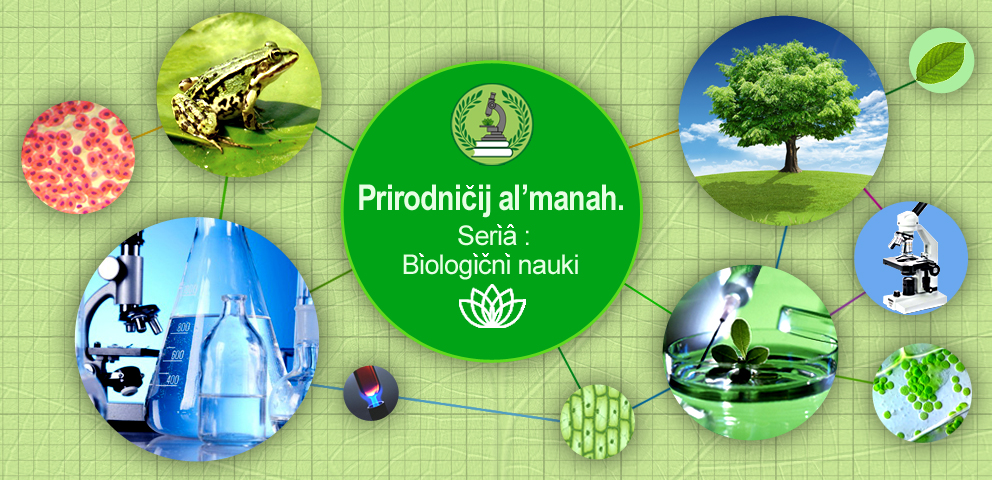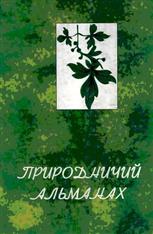BIOMORPHOLOGICAL CHARACTERISTIC OF HALORAGACEAE R. BR. FAMILY AND SPECIES, REPRESENTED IN O. FOMIN BOTANICAL GARDEN COLLECTION
T. P. Mazur, А. Ya. Didukh, N. Ya. Didukh
Abstract
The results of the study of biomorphological features of species of the family Haloragaceae are presented. The Haloragaceae family includes 9 genera and about 130 species. Their distribution in natural conditions is discussed. Introduced family members are represented by three genera and six species. By its biomorphological feature they are perennial, rarely annual coastal-aquatic, marshy, aquatic, herbaceous plants. The life form – aerohydatophytes, hemicryptophytes. Native species of the genus Myriophyllum live in fresh, slow-flowing, almost stagnant reservoirs, and several species reach the coastal habitats. They are very sensitive to water temperature and less to light. The most common type of pollination is anemophily (with wind), entomophily (insect pollination) and autogamy (self-pollination) are also observed (very rare). There are individual populations that have the entire sterile flowers. For the members of the genus vegetative reproductions – with stems and turions, are peculiar. There is a clear correlation between the generative and vegetative reproduction of representatives of the genus Myriophyllum, which is related to the peculiarity of reproduction, the less seeds are formed in plants, the more turions are formed. When growing the representatives of the genus Myriophyllum, it is impossible to plant them at the depth at once. First they are kept in flooded areas of the shore, then, gradually, transferred to deeper sections of the reservoir. Myriophyllum thicket play a very important role in the life of freshwater reservoirs: they have the largest concentration of small invertebrates, which are the main food for the inhabitants of the reservoir, fish deposit the eggs on leaves, and later the fry hide there. Plants of the genus Myriophyllum have important fodder value, they are collected for fattening the waterbirds and
fish, and also used as silage. The possibilities of their use in the conditions of introduction of open and protected soil are presented. Care and breeding methods have been developed in the moderate zone of Ukraine.
References
2. Белавская АП. Семейство сланоягодниковые (Haloragaceae). Жизнь растений. Том 5. Частина 2. М.: Просвещение; 1981; 230.
3. Добычина ТЛ. Семейство Сланоягодниковые (Столисникові) Haloragaceae R. Br. Определитель высших растений Украины. Киев: Наук. думка; 1987;212.
4. Кассельман К. Атлас аквариумных растений. М.: Аквариум; 2001. 371 с.
5. Катанская ВМ. Высшая водная растительность континентальных водоемов СССР. Л.: Наука; 1981. 187 с.
6. Катанская ВМ. Методика исследования высшей водной растительности. Жизнь пресных вод СССР. М.; Л., 1956. Т. 4, ч. 1. С. 160–182.
7. Кємпбел ДХ. Ботанические ландшафты земного шара. Очерки по географии растений. Пер. с англ. Н.Г. Алехиной, под ред. В.В. Алехина. – М.: Иностр. литература, 1948. 439 с.
8. Методика фенологических наблюдений в ботанических садах СССР. Бюл. бот. сада АН СССР. 1979;113: 3–8.
9. Тахтаджян АЛ. Флористические области Земли. Л., 1978. 247 с.
10. Тахтаджян АЛ. Система и филогения цветковых растений. Л.: Наука, 1987. 439 с.
11. Brummitt RK. Vascular plant families and genera. London: R.B.G. Kew, 1992. 732 p.
12. Brummitt RK. Autohors of Plant Names. London: R.B.G. Kew, 1992. 804 p.
14. Kubitzki K. Haloragaceae. In: The Families and Genera of Vascular Plants. 2007. vol. 9: 184–190.
15. Mühlberg H. Des grose Buch der Wasser pflanzen. – Leipzig: Edition. 1980. 408 s.
16. Index kewensis [Електроний ресурс]. Oxford University Press, 1997. 1 електрон. опт. диск. (CD–Rom) is the copyright of the Trustees of the Royal Botanic Gardens, Kew. Developed by System Simulation LTD, using Index softwore. System Simulation LTD.
17. Orchard AE. Taxonomic revisions in the family Haloragaceae. II. Nuytsia, 1977. 2: 126–144.
18. Orchard AE. Myriophyllum (Haloragaceae) in Australasia. II. The Australian species. Brunonia, 1985. 8: 173–291.
19. Haloragaceae. Доступно: https://www.en.wikipedia.org/wiki/ Haloragaceae.

